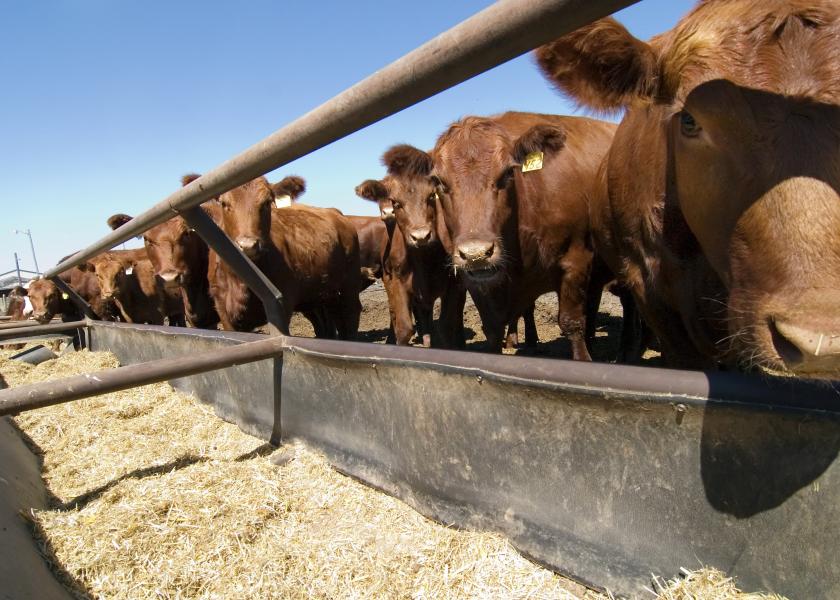Feed Efficiency in Beef Cattle

Feed is a major cost input for all segments of the beef production chain. Feed efficiency is always a primary determinant of profitability, but when feed costs are high, it becomes even more important. We are most familiar with feed efficiency being expresses as the amount of feed required per pound of gain, or the ratio of Feed:Gain.
There is considerable variation in feed intake by individuals above and below that is expected for the animal’s size and growth rate. Researchers have been using the concept of “Residual Feed Intake” to explore animal feed utilization and the efficiency of feed use. Residual Feed Intake or “RFI” is a measure of feed efficiency defined as the difference between an animal’s actual feed intake (either above or below) and the expected feed intake based on the growth rate of the animal. An animal with a positive RFI would consume more feed than expected for a given level of growth, and therefore is less efficient.
While an animal with a negative RFI would consume less feed than expected for a given level of growth and is more efficient. Many breed associations have feed efficiency EPDs based on RFI to help select for more feed efficient cattle.
Different RFI has been tied to differences in nutrient digestibility, production of volatile fatty acids and methane in the rumen, feeding behavior, and differences in the microbial population in the digestive tract. Research from Texas, showed that steers and heifers with low RFI had 19% lower feed consumption with the same average daily gain. Feed digestibility (along with digestibility of protein and fiber) was increased by 4% and ruminal methane production was reduced by 14% in low RFI (or more efficient) cattle. Feeding behavior was also tied to RFI.
In another study from Texas, low RFI steers had fewer and shorter bunk visits and meal events, but the key finding was that low RFI steers had less day-to-day variation in feed intake. More efficient steers (those with low RFI) have lower fasting heat production and thus lower maintenance energy requirements than less efficient steers (those with high RFI), thus less of the feed consumed is used for maintenance.
Stress and disposition have also been tied to performance of breeding and growing animals. Cortisol is a hormone associated with the fight or flight response, higher cortisol levels have been measured in animals with poor disposition (wilder cattle). Research conducted in Nebraska by Andrew Foote (now in our OSU Department of Animal and Food Sciences) found that while cortisol levels were not associated with feed intake, cattle with higher cortisol had lower average daily gain, higher feed:gain, and higher RFI (were less efficient).
These findings point to mechanisms for improved efficiency of low RFI calves and can provide selection tools to help beef producers reduce costs and feed resource use.
Dr David Lalman shows details on the feed efficiency study he and his team are conducting at the OSU Range Cow Research Center North Range. On SunUp TV. https://www.youtube.com/watch?v=JZOsFODf6fo







